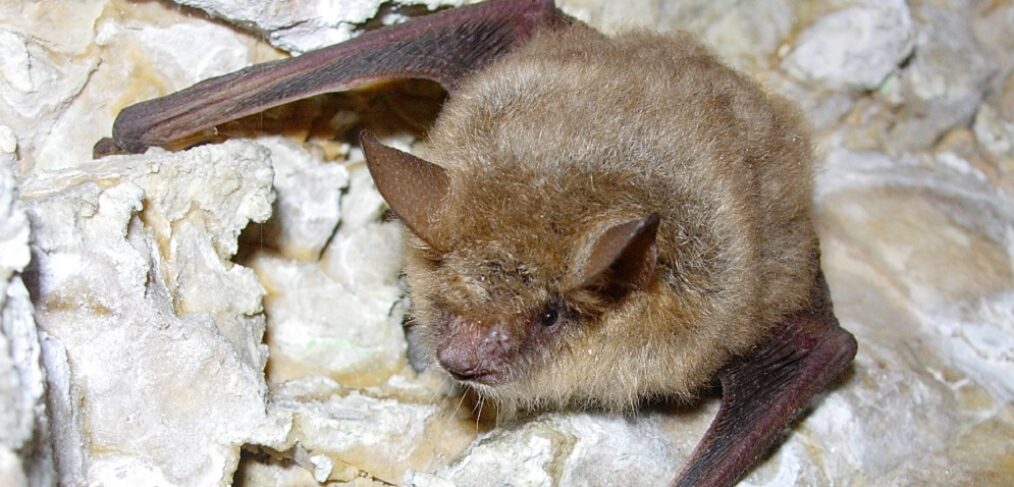
species of the week #38 – Geoffroy’s bat
With a body length of 44 – 50 mm and a weight of 7 – 15 g, the geoffroy’s bat is a medium-sized bat species. It reaches a wingspan of 22 – 24 cm and appears in flight about as large as a sparrow. The back fur is woolly and reddish-brown and the belly is colored white. A notch on the outer edge of the ear is typical. In addition, a hem of fine, easily bent hairs is found at the tail flight skin.
| Distribution status | Threatened with extinction |
| Remaining deposits | Palatinate Forest, Bitburger Land, Our valley |
| Last sightning in Rhineland-Palatinate | current |
| Habitat | Structurally rich forest edges, orchard meadows, water bodies |
| Threat of | Intensive agriculture, road traffic, pesticides, wood preservativesVom |
Geoffroy’s bats like to use tree hollows and bark gaps and large attics as in churches or cattle sheds as sleeping quarters in summer. Incident daylight does not disturb them. The quarters are always near the forest. For the hibernation, the geoffroy’s bat looks for underground, preferably spacious sleep-places in caves, galleries and cellars. Their temperature must lie between 5 and 10 °C. A high air humidity between 85 and 100 % is preferred by the geoffroy’s bats. There they hang themselves in groups freely on ceilings or walls. Sometimes, they also squeeze themselves into narrow gaps.
Their main food consists of spiders and flies, but other insects are also captured. In Rhineland-Palatinate, it reaches its northern spread-limit. The occurrences are concentrated in the Gutland (Bitburger Land), the Hunsrück, the Saar-Nahe-Bergland and the Southern Palatinate (Pfälzerwald). The Palatinate Forest seems to be the most important wintering area of this species in Germany.
Due to the loss of summer quarters and hunting habitats as a result of intensification of use in agriculture and forestry, the geoffroy’s bats are endangered. Insecticide use in their hunting grounds additionally reduces their food supply. Wood preservatives in attics and disturbances are additional risk factors. Increasingly, fatal accidents are caused by collisions with cars and trucks due to the expansion of large highways through forests and forest-near areas.
Politically necessary:
– Preservation of weekhouses and hunting grounds
– 10-15 km distance of traffic routes from the bat’s quarters
– Reduction of insecticide use
– Promotion of a structurally rich landscape
To the other species of the week here
Photo: By Karol Tabarelli de Fatis/MUSEit – MUSE, CC BY-SA 3.0, https://commons.wikimedia.org/w/index.php?curid=48401446
